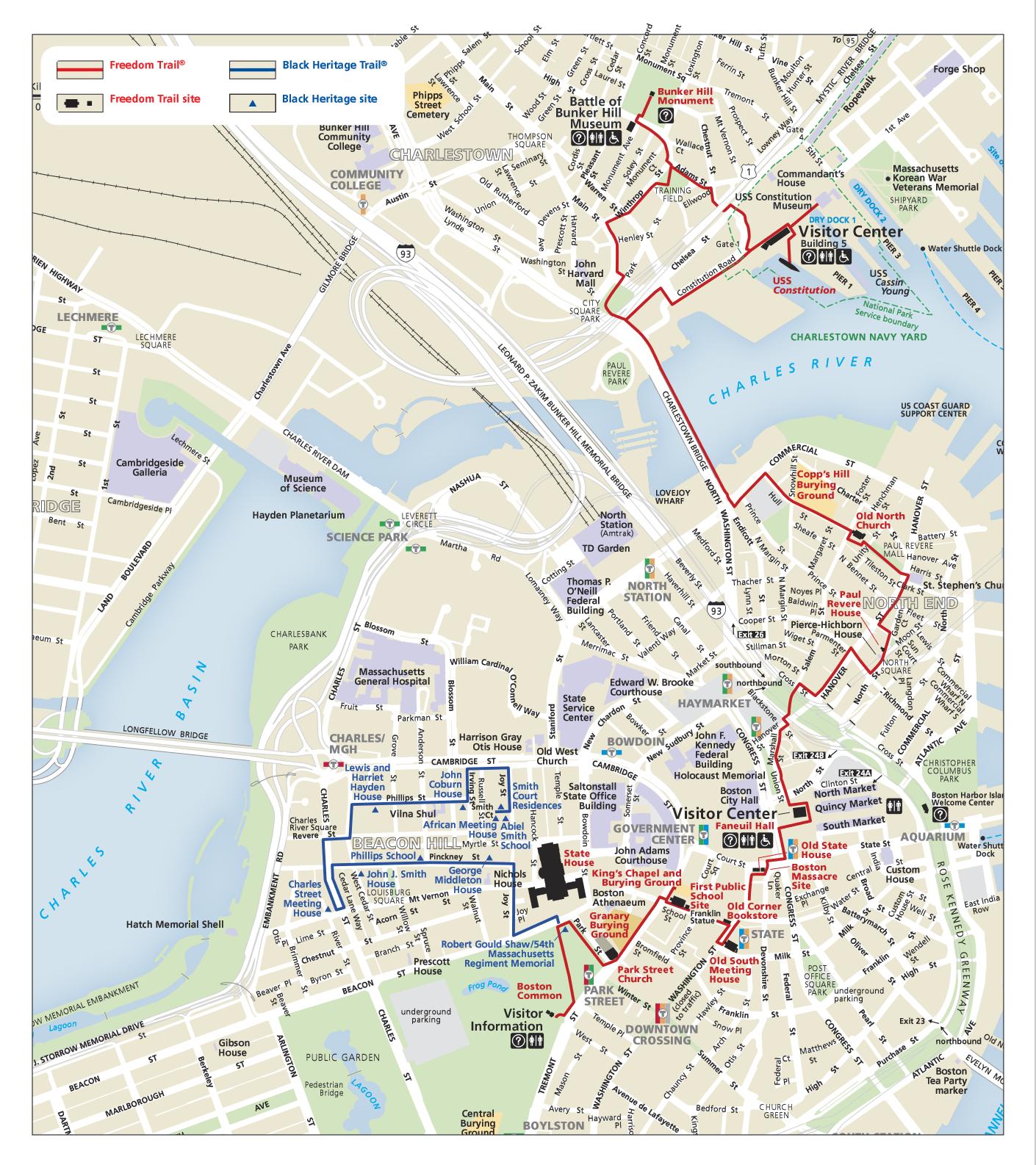Granary Burying Ground
Granary Burying Ground
Freedom Trail Tremont Street Boston, Massachusetts 02108
Official WebsiteFreedom Trail Official Website
Freedom Trail map
About this Location
Town officials set aside for burials part of what was then the Boston Common to help alleviate overcrowding in the nearby King’s Chapel Burying Ground. The Granary Burying Ground took its present name in 1737 when a granary, a small building used to store grain, was moved to the site presently occupied by the Park Street Church. All interments ceased at the Granary in 1880.
The Granary Burying Grounds contains approximately 2,345 gravestones and tombs, although it is estimated that 5,000 people are buried at this site. The grave markers are predominantly slate, with a few in greenstone or marble.
The gravestones’ original haphazard configuration was rearranged into straighter rows to accommodate nineteenth-century aesthetics and the modern lawnmower. During the mid-nineteenth century, many landscaping projects were undertaken in the Granary, including installing pedestrian walkways and planting shade trees and shrubbery.
The remains of thousands of Boston citizens and notables lie within the walls of the Granary. Along with Massachusetts governors, mayors, and clergymen, visitors will find the graves of three signers of the Declaration of Independence: Samuel Adams, John Hancock, and Robert Treat Paine; Peter Faneuil, benefactor of the famed downtown Boston landmark; patriot and craftsman Paul Revere; James Otis, Revolutionary orator, and lawyer; and five victims of the Boston Massacre. Near the center of the ground, a 25-foot-tall obelisk commemorates the tomb of Benjamin Franklin’s parents.
About Freedom Trail
See all hotspots at Freedom Trail
The Freedom Trail is a 2.5-mile-long path through Boston that passes by 16 locations significant to the history of the United States. Marked largely with brick, it winds from Boston Common in downtown Boston through the North End to the Bunker Hill Monument in Charlestown. Stops along the trail include simple explanatory ground markers, graveyards, notable churches and buildings, and a historic naval frigate. While most of the sites are free or suggest donations, the Old South Meeting House, the Old State House, and the Paul Revere House charge admission. The Freedom Trail is overseen by the City of Boston’s Freedom Trail Commission and is supported in part by grants from various nonprofits and foundations, private philanthropy, and Boston National Historical Park.
Features
Wheelchair accessible trail
Restrooms on site
Entrance fee
Content from Official Website and Freedom Trail Official Website
Last updated January 14, 2024
